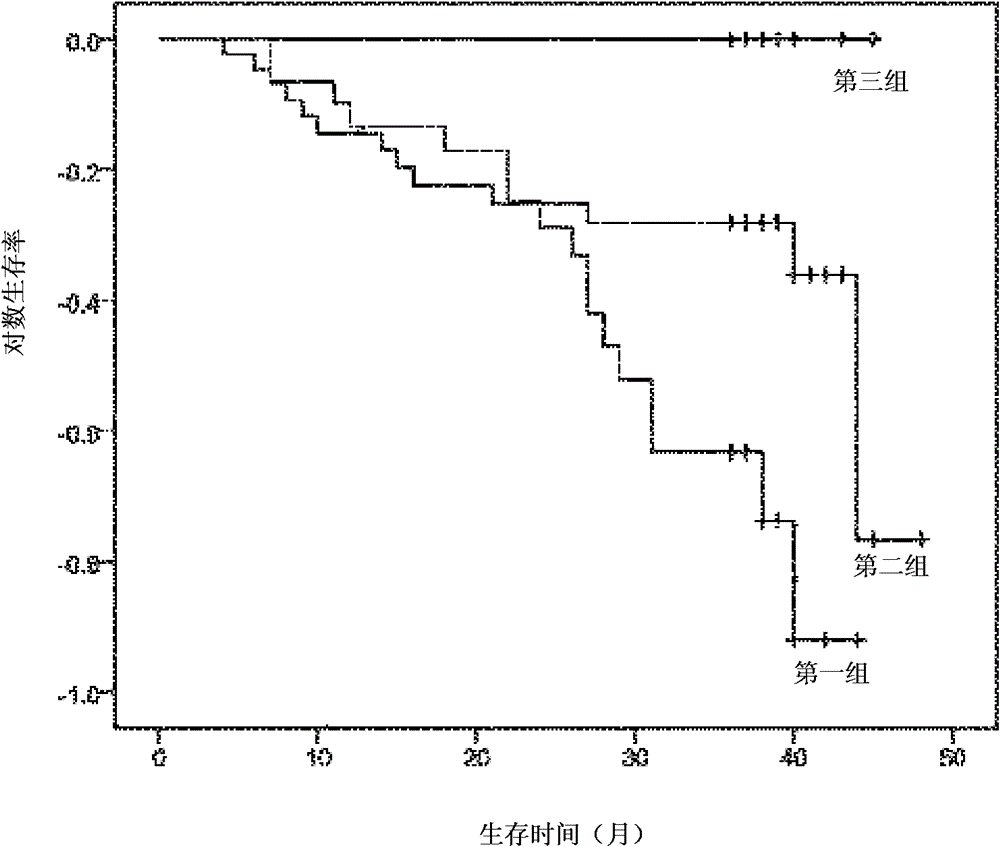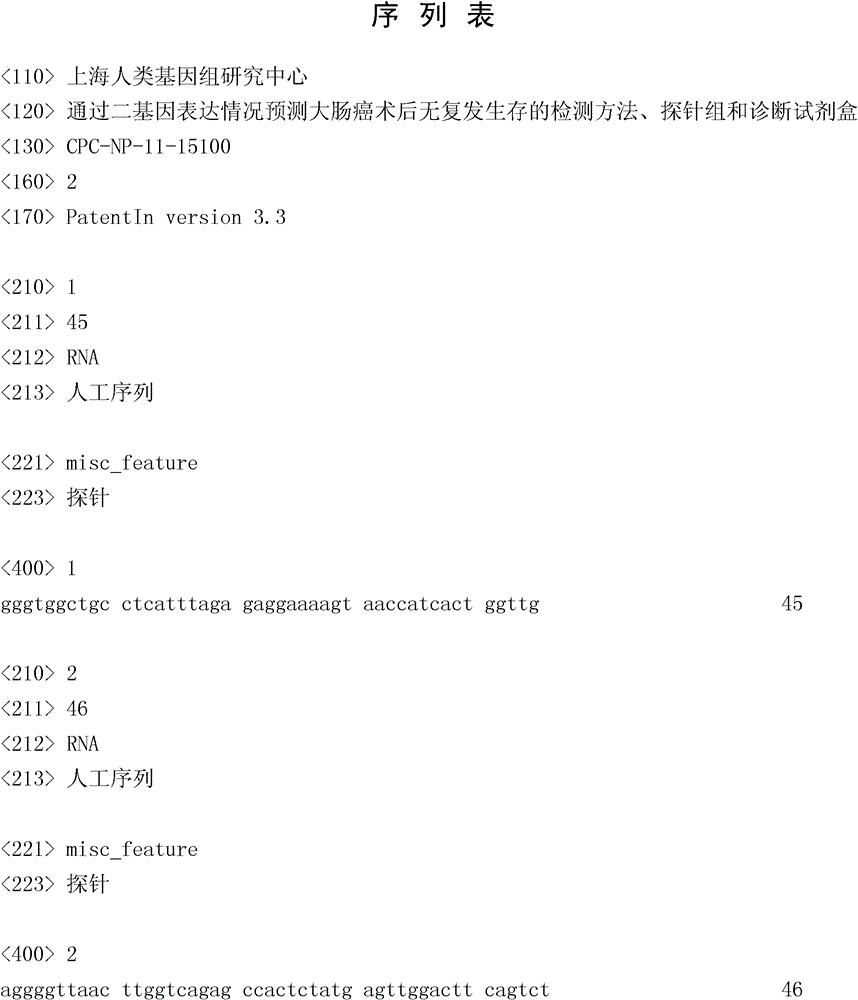Detection method, probe set, and diagnostic kit for predicting postoperation recurrence-free survival of colorectal cancer via gene expression states of two probes
A diagnostic kit and gene expression technology, applied in the direction of recombinant DNA technology, DNA / RNA fragments, etc., can solve the problems of lack of specific clinical manifestations, difficulties, recurrence and metastasis, and achieve the effect of improving survival rate and prolonging survival time
- Summary
- Abstract
- Description
- Claims
- Application Information
AI Technical Summary
Problems solved by technology
Method used
Image
Examples
Embodiment Construction
[0017] The following examples are only used to illustrate the present invention, but not to limit the scope of the present invention. The experimental methods without specific conditions in the examples usually follow the conventional conditions, such as the conditions described in Sambrook et al., Molecular Cloning: Laboratory Manual (New York: Cold Spring Harbor Laboratory Press, 1989), or according to the manufacturer The suggested conditions.
[0018] 1. Subject
[0019] The subject of this example was selected from June to December 2004, in the Department of Colorectal Surgery, Fudan University Affiliated Tumor Hospital, 172 patients with stage II-III colorectal cancer who underwent radical surgery and had no distant metastasis in the preoperative examination . After all the above-mentioned patients have completed postoperative adjuvant treatment and entered the simple follow-up period, a second screening was carried out, and 29 patients with stage II who did not receive adj...
PUM
 Login to View More
Login to View More Abstract
Description
Claims
Application Information
 Login to View More
Login to View More - R&D
- Intellectual Property
- Life Sciences
- Materials
- Tech Scout
- Unparalleled Data Quality
- Higher Quality Content
- 60% Fewer Hallucinations
Browse by: Latest US Patents, China's latest patents, Technical Efficacy Thesaurus, Application Domain, Technology Topic, Popular Technical Reports.
© 2025 PatSnap. All rights reserved.Legal|Privacy policy|Modern Slavery Act Transparency Statement|Sitemap|About US| Contact US: help@patsnap.com


